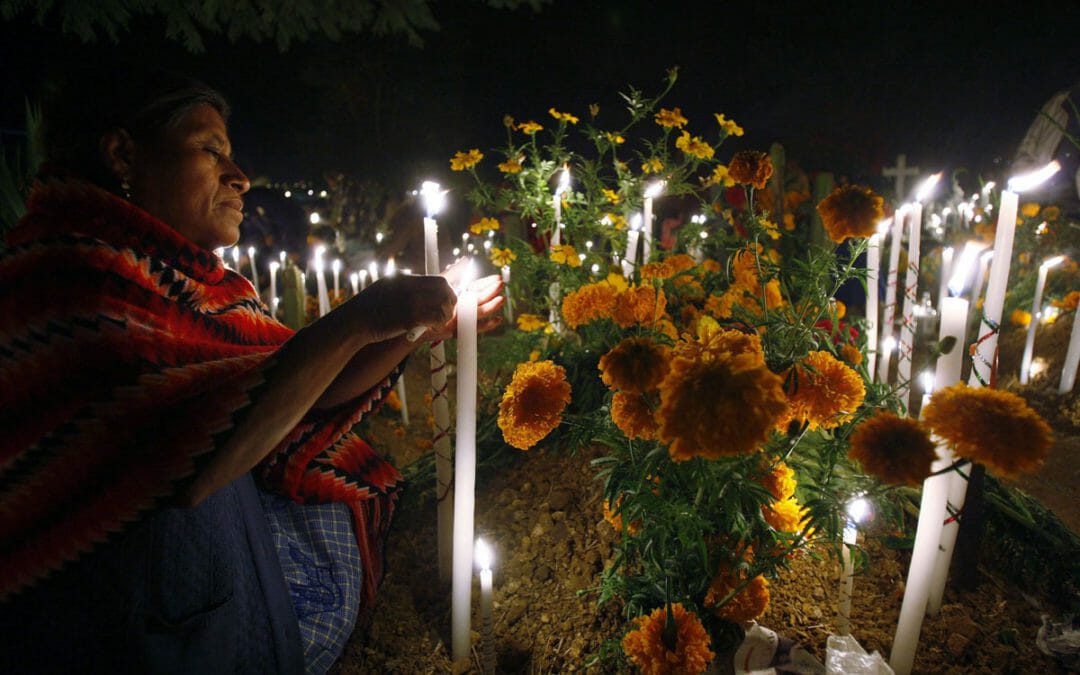The Mexican Festival Día de Muertos – Day of the Dead is when the living gathers to honour, remember and celebrate the lives of the dead and help support their spiritual journey. It is a holiday rich in cultural traditions that happens over three days beginning on October 31st.
This festival has been observed (in various forms) for 3000 years. It began many, many, moons ago by the Aztecs. The Aztecs celebrated death as they believed that only in death we are truly awake. Before the Spanish conquest, in 1519, the indigenous people celebrated at different times of the year. Gradually the holiday was moved to be associated with the Western Christian triduum Allhallowtide: All Saints Eve (Halloween), All Saints Day and All Souls Day.
This Mexican festival is celebrated with music, plays and other forms of entertainment. In recent years the festival has become a major tourist attraction with a massive parade in Mexico City.
The skull is a symbol of death and predominantly featured in the art of the Day of the Dead Festival. People often paint skulls on their faces. It is common practice to paint just one half of their face with the skull to illustrate the quick transition between life and death. A calavera – sugar skull is a common decoration for the Day of the Dead.
During the three-day celebration families build altars in their homes, and some visit the cemeteries where their loved ones are buried to hold overnight vigils with singing, praying and communing with neighbours alongside the decorated graves of their loved ones. Those that choose to build altars in their homes still use this sacred time to visit the gravesites and respect the tradition of cleaning the area surrounding the headstone and leaving cempasucil flowers (marigolds).
Marigolds, the official flower of the dead, guide the spirits to their altars using their vibrant colours to the Ofrenda de Muertos – Offering to the Dead. The offerings typically include toys and sweets for dead children, and alcohol for the adults. Pan de Muerto – Dead Bread is a sweet, sugary, soft bread often decorated with cross bones that represent the deceased loved ones. Sometimes the bones are displayed in a circle to represent the circle of life.
On All Saints Day (November 1st) leading to All Souls Day (November 2nd) it is believed that is when the living and the dead reunite. November 1st often called Día de los Inocentes or Angelitos – is reserved for honouring deceased children, while the 2nd is for deceased adults. Some societies may find this scary or morbid; but Mexicans believe that there is nothing to fear as death is not an ending; but a new beginning. Extra candles are lit for the forgotten souls.
Day of the Dead happens to be one of our favourite Mexican celebrations! There is a delightful movie “Coco” by Pixar, based on this celebration, which promises to be amazing and will be released in time for the American Thanksgiving, November 22nd 2017 (according to Cineplex). We are so looking forward to seeing when it’s released.
This is a wonderful award-winning short Claymation film worth watching:
If you want to learn more about the Mexican culture and traditions, ask us about booking a private group trip there!






